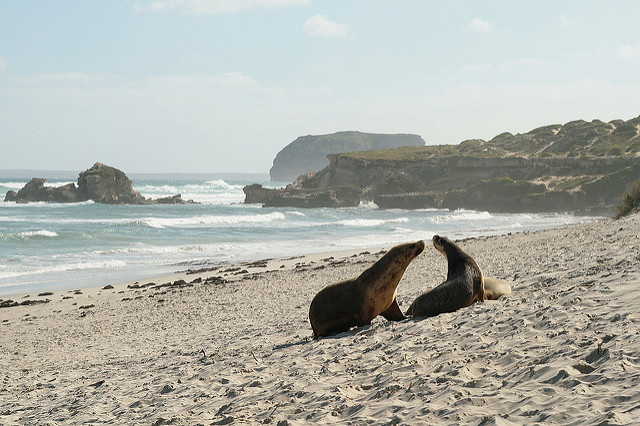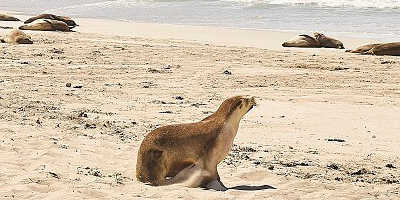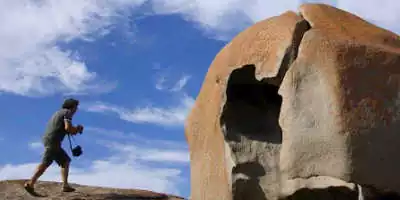Seal Bay, Kangaroo Island
Kangaroo Island is famed for its extensive animal-spotting opportunities. At Seal Bay, you won’t be disappointed.
This is where the island’s resident Australian sea lion colony gather together to bask in the sun after a day spent fishing in the surrounding ocean.
The bay boasts the third largest colony of these sea lions in the country and is one of the most popular stops for visitors on the island. To get down to the beach where the sea lions bask, frolic, and bathe, you have to pay for a tour – this is a system put in place to protect the colony and their future.
The History of Sea Lions on Kangaroo Island
Ever since the European colonisation took place, the huge sea lion population that calls Kangaroo Island home has been exploited to some extent. Even in 1945, the sea lions were used as shark bait until the Royal Society of South Australia wrote a plea to the South Australian Museum in 1953 asking them to protect the sea lions that lived on the southern coast of the island.
The plea was accepted, and a closed-off area especially for the sea lions was set up between Nobby Islet and Cape Gantheaume.
In 1955, shortly after the protection of these fascinating creatures was put in place, organised tours were set up. The tours continued for years, taking thousands and thousands of visitors to see the creatures.
Later, in 1967, the dedicated stretch of land was re-dedicated as a fauna reserve and a separate area was created for the sea lions to breed in away from the prying eyes of tourists. It wasn’t until 1972 that the reserve was re-named as the Seal Bay Conservation Park, which it remains today.
The Seal Bay Visitor Centre
The accompanying visitor’s centre gives you the chance to learn more about these exceptional and rare creatures via a series of multimedia displays on the history of sealing, life at sea, the evolution of the creatures, current and past research that has taken place on them, and the effects of marine pollution on the Kangaroo Island colony.
The visitor centre prides itself on being completely environmentally friendly with solar power and fresh rainwater fuelling the displays.
After you’ve explored the displays and delved into the behaviour, history, and habitat of the sea lions, you can pop into the gift shop to pick up a souvenir or tuck into a quick snack from the on-site café.
Back outside, there is a self-interpretative boardwalk that overlays the unique dune system of the area, giving you the chance to see the sea lions’ habitat from up close.
Related article: Fun Facts About Australian Sea Lions.




